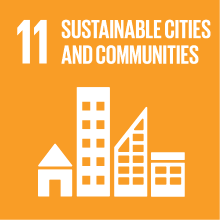ETRUSCOLOGY AND ITALIC ARCHAEOLOGY - II
- Academic year
- 2020/2021 Syllabus of previous years
- Official course title
- ETRUSCOLOGIA E ARCHEOLOGIA ITALICA II
- Course code
- FT0073 (AF:283064 AR:178034)
- Teaching language
- Italian
- Modality
- On campus classes
- ECTS credits
- 6 out of 12 of ETRUSCOLOGY AND ITALIC ARCHAEOLOGY
- Degree level
- Bachelor's Degree Programme
- Academic Discipline
- L-ANT/06
- Period
- 2nd Term
- Moodle
- Go to Moodle page
Contribution of the course to the overall degree programme goals
Objectives of the course are: to develop the ability to think about the dynamics of formation and development of the Etruscan civilization and of ancient Italy, also from different points of view. It aims to provide the methodology for the analysis of archaeological contexts also in comparison one with each other.
Expected learning outcomes
- To know basic archaeological and technical terminology
- To Know Italic chronology relative and absolute
- To know main theoretical models to analize settelments and necropolis
- To Know main theoretical models to analize material culture and social organization
2. Ability to apply knowledge and understanding
- To be able to employ archaeological and technical terminology
- To be able to apply chronological references for the Italic Iron age
- To be able to analyze some case studies for settlements and necropolis
- To be able to analyze examples of material culture and artistic finds
3. Judgment skills
- To be able to judge and argue hypothesis about etrusco-italic contexts
4. Communication skills
- To be able to tell new finds or results of the research with a plain and technical terminology
- to be able to compare themselves with colleagues and tutor, even in virtual way
5. Learning ability
- To be able to take notes and to share them with colleagues, even on line
- To be able to consult bibliographic references even with a critical point of view
Pre-requirements
Contents
The course will focus on the methodology of reading funerary contexts, rituals and a symbolic way of interpetation, through the knowledge of some examples of Etruscan civilization and contemporary Italic lones.
The course is also based on the comparative analysis of historical and archaeological sources, for the purpose of a coherent and wide-ranging interpretation.
Themes are proposed for attending and not attending. Non-attending students will have to take into consideration the specifically indicated bibliography and will be able to deepen individual topics of their specific interest on request.
Referral texts
D’Agostino B. 1985, Società dei vivi, comunità dei morti: un rapporto difficile, in “Dialoghi di Archeologia” III,I, pp. 47-58.
Bietti Sestieri A.M. 1992, La necropoli laziale di Osteria dell'Osa, Roma.
Esposito A. 2018, La necropoli di Pontesanto a Imola, Arimnestos. Ricerche di Protostoria mediterranea, I, pp. 187-206
Cuozzo M.A. 2003, Reinventando la tradizione. Immaginario sociale, ideologie, e rappresentazione nelle necropoli orientalizzanti di Pontecagnano, Paestum.
Angelini R., Bentini L., Rodriguez E., von Eles P. 2015, Ritualità funeraria tra Veneto e Verucchio (Rinini) nell'età del Ferro: un confronto possibile ?, in Leonardi G., Tiné V. ( a cura di), Preistoria e Protostoria del Veneto, atti della XLVIII riunione dell'IIPP (Padova 2013), Firenze 2015, pp. 533-540.
Ruta Serafini A. 2013, Alla riva che non ha sole, alla riva delle tenebre, in M. Gamba, G. Gambacurta, A. Ruta Serafini, F. Veronese, V. Tiné, Venetkens. Viaggio nella terra dei Veneti antichi, catalogo della mostra, Venezia, pp. 93-97.
Per approfondimenti e per i non frequentanti alcuni saggi a scelta da concordare con il docente:
D’Agostino B. 1977, Tombe principesche dell’Orientalizzante antico da Pontecagnano, in “Monumenti Antichi dei Lincei”, serie misc. II,2, pp. 1-110.
Peroni R (a cura di ) 1981, Necropoli e usi funerari nell’età del ferro, Bari.
Boiardi A., von Eles P. 2006, Codici funerari: dalle “regole” alla situazione “eccezionale” o viceversa ?, in Studi di Protostoria in onore di Renato Peroni, Firenze, pp. 602-608.
Bianchin Citton E., Gambacurta G., Ruta Serafini A. (a cura di) 1998, … ‘presso l’Adige ridente ‘… Recenti rinvenimenti archeologici da Este a Montagnana, catalogo della mostra, Padova.
Assessment methods
Type of exam
Teaching methods
Lectures and exercises
On.line papers for specific topics.
2030 Agenda for Sustainable Development Goals
This subject deals with topics related to the macro-area "Cities, infrastructure and social capital" and contributes to the achievement of one or more goals of U. N. Agenda for Sustainable Development


